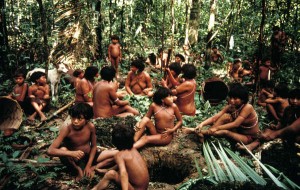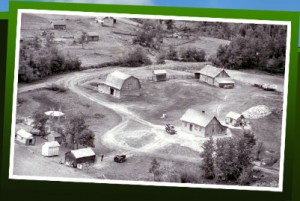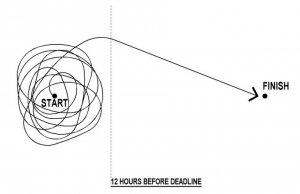Wikipedia has a short entry with links to most computer assisted qualitative data analysis software, including freeware, proprietary, and web-based programs.
All posts by Sandra Mathison
Summer Institute ~ opportunities to learn about qualitative research
“Some laws of civilization”
For more Marshall Sahlins humour, see Waiting for Foucault, Still.
Some Laws of Civilization
First law of civilization: All airports are under construction.
Second law of civilization: I’m in the wrong line.
Third law of civilization: Snacks sealed in plastic bags cannot be opened, even using your teeth.
Fourth law of civilization: The human gene whose discovery is announced in the New York Times—there’s one every day, a gene du jour—is for some bad trait, like schizophrenia, kleptomania, or pneumonia. We have no good genes.
Fifth law of civilization: Failing corporate executives and politicians always resign to spend more time with their families.
Detroit ~ understanding urban development and decay through urban exploration (urbex)
Detroit has become a living laboratory for studying the creation and decline of urban industrial cities. The scale of deterioration in Detroit far exceeds that of other declining urban areas.
Detroit population:
1910 286,000
1950 1,850,000
2010 713,000
When the population of cities swell infrastructure develops to accommodate their needs, and as that population shrinks the infrastructure remains, leaving a ghostly reminder of these demographic changes. Houses, schools, churches, streets remain but are abandoned. 
These abandoned spaces remain and as they deteriorate the land returns to what it was before the city developed. In downtown Detroit open fields have appeared amidst the remaining buildings… some of those spaces are being claimed as urban gardens.
One study that is chronicling the changes that Detroit continues to experience in this continuing story of urban change is Detroit Urbex. The intent is to “raise awareness of the social and economic challenges the city of Detroit faces through photography.” This is part of a movement called urban exploration or urbex, the exploration of man made structures, often involving exploration in places that are off-limits, and complete with suggestions for the kit for explorers (urban spelunking gear!).
Detroit Urbex’s photographic record is rich and deep, connecting the past and the present.  Now and Then is a kaleidoscope of past and present images that are remarkably poignant. These images from Cass Tech High School, the most prestigious Detroit High School ~ now demolished, illustrate this technique.
Now and Then is a kaleidoscope of past and present images that are remarkably poignant. These images from Cass Tech High School, the most prestigious Detroit High School ~ now demolished, illustrate this technique.

The ethics & politics of research ~ Napoleon Chagnon will not go away
For decades now controversy and acrimony have swirled around Napoleon Chagnon, the anthropologist who studied the Yanomami living in the rainforests of northeastern South America’s Orinoco Basin. I read Chagnon’s work as an undergraduate and recall that the work was titillating, but even then understood his work as a reflection of an age old approach in cultural anthropology to see cultural groups through an evolutionary lens, progressing from simple (usually meaning hunting and gathering economies) to complex (industrial or us).
 What I didn’t quite appreciate at the time was the evolutionary biological and genetic conclusion Chagnon drew ~ that described the Yanomami as “the fierce people” who are the iconic example of the innate, natural state of humans ~ a state of chronic warfare and homicidal violence.
What I didn’t quite appreciate at the time was the evolutionary biological and genetic conclusion Chagnon drew ~ that described the Yanomami as “the fierce people” who are the iconic example of the innate, natural state of humans ~ a state of chronic warfare and homicidal violence.
Among anthropologists, Chagnon’s conclusions have been discredited, a case of serious over-reaching from the data. (See, for example, the Survival for Tribal Peoples for much more detail about the discrediting of Chagnon’s conclusions.) His work has value primarily as an example of what not to do if you want to do good ethnography, a methodological counter-example if you will. Marshall Sahlins coined the term research and destroy to characterize situations where anthropologists are complicit with colonial, military interests and he describes how Chagnon’s work with the Yanomami falls into this category. More broadly the negative impact of anthropologists in South America has become an important ongoing controversy that pivots around Patrick Tierney’s book, Darkness in El Dorado: How Scientists and Journalists Devastated the Amazon.
In spite of a thorough critique within the discipline, Chagnon continues to hold sway. Those who continue to laud his work see the critics as anti-science. His competence as an anthropologist is questionable yet he rumbles on and his new book Noble Savages is being promoted in the mainstream media. This book is as much an attack on anthropology as a further elucidation of the Yanomami peoples, a point Elizabeth Povinelli makes in her review of the book. While Chagnon’s book fuels the flames of this decades old controversy, his election in 2012 to the National Academy of Sciences serves to exonerate him and celebrate his work. Chagnon’s election to the NAS has provoked a resignation from the NAS by Marshall Sahlins, also a prominent anthropologist.
Historically, academic disciplines go through periods of upheaval, intellectual dust ups that sometimes result in Kuhnian paradigm shifts. The Chagnon story may be a pivotal event around which anthropology makes such a shift… but this paradigm shift, if that’s what it is, continues to play out slowly and acrimoniously. Time may tell.
Abandoned places: Six Flags Amusement Park, New Orleans
The places we create and abandon say something about us culturally, politically, morally.
Who is going to protect the researchers?
IRBs require researchers to guarantee their research participants confidentiality. Leaving aside the obvious question of whether this is always necessary or desirable, we know that in some instances research requires this promise to gain access and to protect research participants from harm. Such is surely the case with Chris Bruckert & Colette Parent, criminologists at the University of Ottawa, who having conducted research with sex trade workers. Many contexts of the social world are accessible because researchers can promise participants they will not be harmed as a consequence of participating in that research, and when deviant, illegal, secret or elite activities are the research focus this is essential. Researchers and participants assume confidentiality means confidentiality!
Bruckert & Parent are finding out that promising confidentiality is an obligation, but that it may well not be respected. Police have demanded access to research interview transcripts with a sex trade worker who five years after the interview is charged with murder. Journalists face this situation with some frequency and their employers understand that quality journalism is sometimes dependent on confidential sources. When journalists rights to withhold their sources are challenged in court, their employers go to legal bat for them.
Not so for Bruckert & Parent. The University of Ottawa has refused to provide legal representation for the researchers (even though the UOttawa IRB demanded confidentiality be guaranteed) claiming that it isn’t their role to stand in the way of other’s desire to violate their demand for confidentiality. How peculiar and disingenuous! The Canadian Association of University Teachers is providing legal support for the researchers, and the case goes to court sometime in the summer of 2013.
This promises to be a serious test for researchers as the individual charged with murder is Luka Rocco Magnotta. Magnotta is charged with the brutal slaying and dismemberment in Montreal of Lin Jun, a Chinese student at Concordia University, then posting the gruesome video of the killing online.
Both Magnotta and the researchers have filed a motion to maintain the confidentiality of the interview contents. The researchers successfully defended research confidentiality in Quebec Superior Court, winning a qualified researcher-participant privilege in the process.
An analysis of the legal ruling draws conclusions that can inform universities and researchers in navigating ethics expectations, including:
- “researchers’ institutions must be ready to provide legal support to their researchers in order to fulfill their ethical obligations to protect research participants and contractual obligations to the granting agencies to abide by the TCPS
- reaffirms the Wigmore criteria are the appropriate vehicle for the court to adjudicate claims to privilege for the researcher-participant relationship
- The Parent decision also shows the high value courts place on the research enterprise and the role of academic freedom
- involvement in criminal activity per se does not vitiate a claim of privilege
- researchers should walk their talk, i.e., if research confidentiality is important, then their behaviour should be consistent with that importance in every respect
- a preferred strategy [for ascribing pseudonyms] would be for the researcher to supply one, such that the link between a specific person and a specific interview would be known only to the principal investigator in any project”
Getting that dissertation done ~ a humorous look
That lonely stage of your program where you are working on your dissertation or thesis. These images are from architect Jody Brown, who has a pretty good handle on the generic challenges of designing and executing a project. He is a frequent contributor on Houzz.
Introduction to ontology & epistemology
Using aerial photographs
 Aerial photography has been around for a long time ~ indeed there was a time living on the Canadian prairies where aerial photographers took pictures and then sold them to farmers, a sort of self-portrait of their homestead. My grandparents proudly displayed such a photograph in their living room and as a child I found it a fascinating perspective.
Aerial photography has been around for a long time ~ indeed there was a time living on the Canadian prairies where aerial photographers took pictures and then sold them to farmers, a sort of self-portrait of their homestead. My grandparents proudly displayed such a photograph in their living room and as a child I found it a fascinating perspective.
Google Maps provides an interesting resource for using the aerial perspective to examine constructs such as land use and housing patterns. For example, John Hill in this blog post looks at housing patterns, particularly suburban housing patterns that show an evolution from the sterile grids of suburbia characteristic of early suburban development, a pattern Thomas Jefferson laid down in the 18th century. His analysis of housing patterns illustrates an evolution that considers issues of density, community, and aesthetics based on the housing patterns (grids, fairway housing, fly-in homes, canal homes, cul-de-sacs, gated communities, tract mansions (what some folks call McMansions) and so on) we see in aerial photographs. This analysis clearly illustrates changes over time, concluding with suburban planning that reflects a contemporary interest in being ‘green,’ developments that encourage transit use, walkability, mixed-use spaces, and energy efficient construction.
See also Context and Perspective








 Follow
Follow











